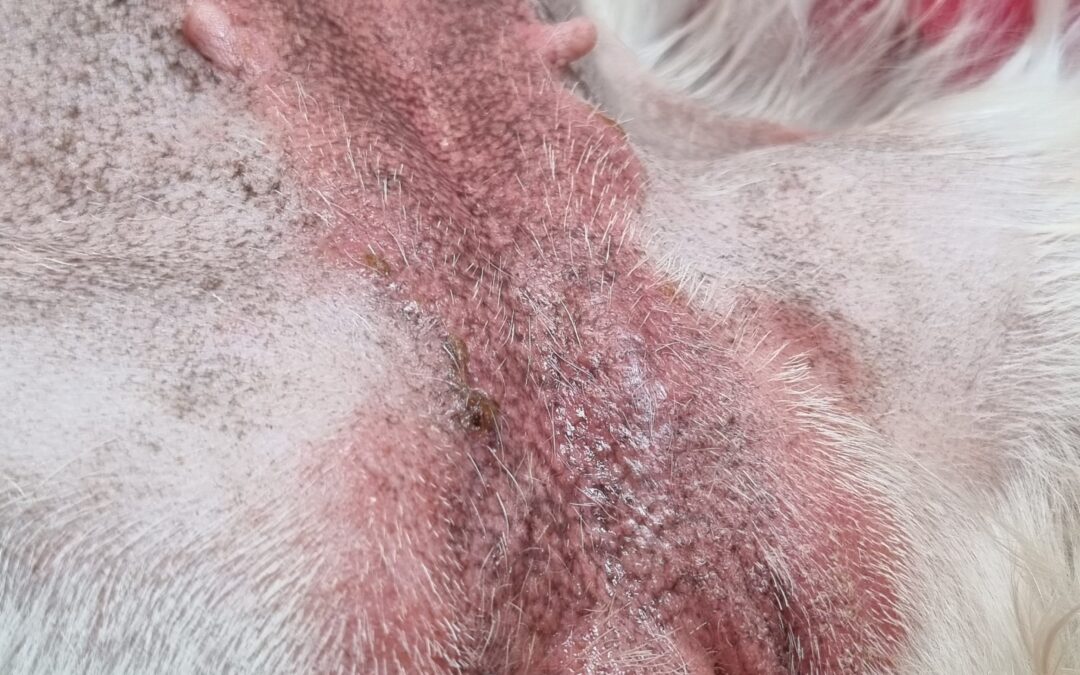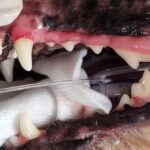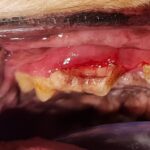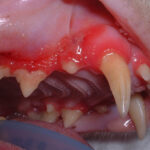Atopy and Allergic Dermatitis – what is it?
Allergic dermatitis, also known as Atopic Dermatitis refers to inflammation of the skin which is often triggered by environmental allergens. An allergen is a substance which may cause an allergic reaction such as pollen and dust mites.
Atopic dermatitis has a similar mechanism to eczema in people. It is believed that environmental allergens come into contact with the skin thereby causing an allergic reaction.
As a result of this inflammation, our pets often suffer from intense itchiness of the skin and will scratch, bite, lick, chew or rub at the affected areas. This can lead to severe skin damage and sometimes secondary skin infections.
Common environmental causes include;
- Pollens
- Grasses
- Dust
Why are some pets more prone to developing Atopic Dermatitis?
Pets who suffer from Atopic Dermatitis tend to have a defective skin barrier defence system. The skin barrier is made up of several layers which form a defence system, aimed at stopping allergens like plant and grass pollen from getting through. When this barrier is dysfunctional, the skin tends to dry out quickly and is unable to stop allergens getting through.Once the allergen penetrates the skin it sets off a cascade of allergic reactions resulting in the common symptoms we see, including;
- Foot chewing with brown or reddish staining of the fur between the toes
- Sometimes red areas in the webbing between toes
- Red and inflamed areas of skin on the belly, groin and under arms
- Sometimes the skin can become dark and pigmented, as well as as rough and thickened
- Ear problems such as redness, head shaking, or recurrent ear infections
- Itchy bottoms or inflamed skin around the perineum
- A greasy or smelly coat with increased dandruff
- Thinning of the hair particularly on the lower limbs
Can I find out what my pet is allergic to?
We often get asked can I allergy test my pet to find out what they are allergic to. Yes allergy testing can be done, but often interpereting the results may not always change the treatment plan. In most cases pets may return a positive allergy test to many common environmental allergens such as grasses, which can be impossible to remove from a pet’s environment.
Allergy testing may be useful if the intention is to seek help from a specialist dermatologist with the view to undergoing a desensitization program with allergy vaccines
What treatment options do I have for my pet?
Most pets showing signs of atopic dermatits can be intensely itchy and uncomfortable. The first step will be a course of short term medication to reduce the itch, discomfort and any secondary concerns such as infection. In the majority of cases however symptoms return and so a longer term plan is needed to reduce a flare up of symptoms
We tend to recommend a combination of treatments
- Short term medications to stop the itch and treat any underlying skin infections
- Topical washes and lotion both soothing and medicated
- Appropriate therapeutic diets and supplements can also aid in the reduction of symptoms and flare ups.
Treatments include
- Cortisone is great for stopping the severe itches in the short term, however longer term use is not ideal as it can lead to many side effects such as increased thirst and urination, weight gain, hair loss and immunosuppression and liver changes.
- Cytopoint which is one of the newest treatment options and has the least side effects. Cytopoint is given as a regular injection that works to stop the itch reaction in the first place before the skin becomes inflamed and damaged. We have had some wonderful results with many pets being able to stop all other medication.
- Apoquel is another oral medication specifically designed to be used for allergic and atopic dermatitis in the long term and can be considered it Cytopoint has not been as effective.
- It can be used long and short term and since it is not a steroid it does not have the associated side effects.
- Antibiotics and antifungals are sometimes when skin infections are present., however with the increase of bacterial resistance it is often reserved for only the most severe cases.
- Anti-histamines: Antihistamines are not always very effective but can help to reduce some itching and complement other treatments.
- Topical washes /Treatments: Medicated shampoos, conditioners and lotions aplay a vital role in the management of pets with chronic atopic dermatitis. Most help to soothe and re-hydrate the skin, and Newer types such as Nutriderm and also help to improve the skin barrier defence when used regularly. Medicated washes such as Malaseb, or Mediderm help control infection and can be a suitable replacement for oral antibiotics.
Long term Management
Most cases of atopic dermatitis will be ongoing with some periods during the year causing intense flare ups. Ongoing management includes, staying on top of the itch and improving the skins barrier defence system
This may involve the use of an effective anti-allergy medication, regular medicated washes and nutritional support such as Derm-complete, which is a specifically formulated diet to reduce skin allergies.
The take home message…
It is important to realize that allergic dermatitis is not a curable problem and needs to be managed to reduce severity and flare ups.
In many pets the aim of treatment is a comfortable pet who has limited desire to itch and is on the minimal amount of medications (if any) as possible.






